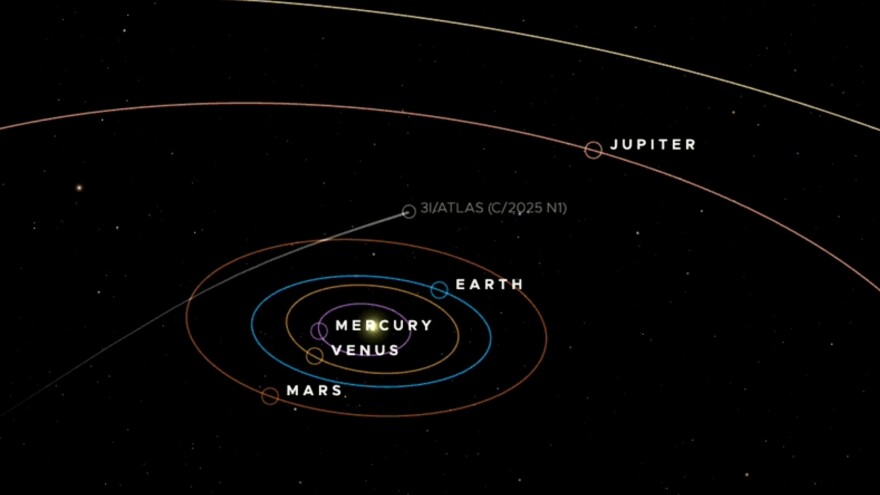BETHLEHEM, Pa. — Brad Klein reviews upcoming astronomical highlights with Bethlehem’s ‘Backyard Astronomy Guy,’ Marty McGuire.
This week, a rare interstellar comet is passing through our solar system. It was detected by an array of telescopes designed to warn astronomers should a comet be on a collision course with Earth.
Comet 3I/ATLAS is not visible with the naked eye, and it is not going to hit the Earth. Even at its closest, later this year, NASA estimates that it will be about 170 million miles away. But that is still inside the orbit of Mars, passing right through the heart of our solar system.

It’s classified as an ‘interstellar comet’ because it does not “follow a closed orbital path about the sun,” according to NASA. It’s currently near its closest approach to the sun but when it leaves our solar system it’s never coming back, unlike familiar comets that remain captured by the sun’s gravity.
This comet was discovered by the NASA-funded ATLAS (Asteroid Terrestrial-impact Last Alert System) survey telescope in Rio Hurtado, Chile on July 1, 2025. ATLAS watches the skies to provide some warning of any object that might collide with Earth.
In 2013, an asteroid exploded over Russia, and people were injured by breaking glass in homes and businesses. So, any warning of approaching space rocks could be helpful.



